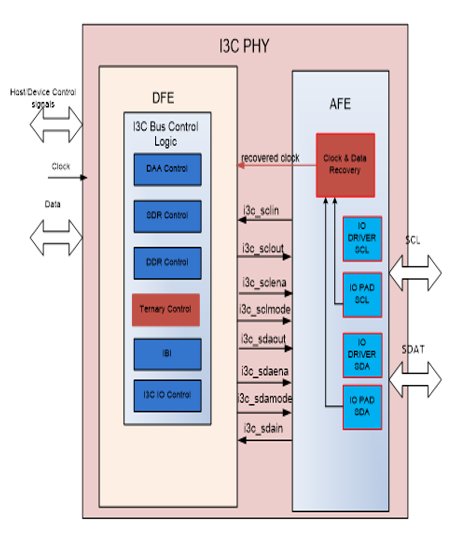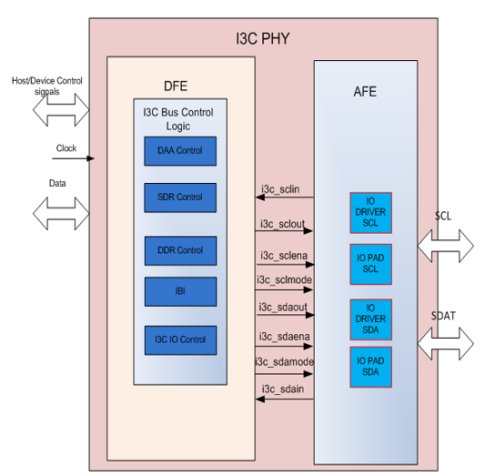Arasan I3C PHY - Ternary vs. Non-Ternary
I3C (Improved Inter-Integrated Circuit) is a communication protocol that builds on the I2C standard, offering improved performance, power efficiency, and data rates. In the I3C PHY layer, ternary and non-ternary modes refer to the encoding methods used for signaling.
Ternary Mode
- Definition: In ternary mode, three signal states are used for communication. This allows more information to be encoded in fewer transitions. HDR-TSP and HDR-TSL use Ternary signaling on the two wires.
- Advantages:
- Higher Data Rates: By encoding more data per signal transition, ternary mode can achieve faster data transfer rates.
- Power Efficiency: It can be more power-efficient as fewer transitions are required to send the same amount of data.
- Noise Immunity: The intermediate state provides better noise tolerance, as small fluctuations in voltage may not result in misinterpreted signals.
- Applications: Ternary signaling is typically used in high-speed I3C communication where maximizing data throughput is important.

Non-Ternary Mode
- Definition: Non-ternary mode refers to traditional binary signaling with two states. But no HDR-TSL/TSP support.
- Advantages:
- Simplicity: Easier to implement in hardware since it uses only two states (high and low).
- Compatibility: Works well with legacy I2C devices that only support binary signaling.
- Lower Complexity: Non-ternary mode may be easier to design and debug due to simpler signaling.
- Applications: Non-ternary mode is commonly used in lower-speed, lower-power applications where the simplicity of binary signaling is sufficient.

Key Differences
- Data Encoding:
- Ternary mode uses three states, allowing more data per transition.
- Non-ternary mode uses two states (binary signaling).
- Speed:
- Ternary mode offers higher data rates.
- Non-ternary mode operates at lower speeds.
- Complexity:
- Ternary mode is more complex to implement but more efficient.
- Non-ternary mode is simpler but less efficient in terms of data rate.
- Use Case:
- Ternary mode is typically used for high-performance devices requiring fast communication.
- Non-ternary mode is used in simpler, cost-sensitive, or legacy systems.
If you're designing or selecting an I3C PHY, the choice between ternary and non-ternary mode will depend on your application's speed, power efficiency, and hardware complexity requirements.
Related Semiconductor IP
Related Blogs
- MIPI CCI over I3C: Faster Camera Control for SoC Architects
- Exploring the XSPI PHY: Technical Characteristics, Architectural Challenges, and Arasan Chip Systems' Solution
- I3C IP: Enabling Efficient Communication and Sensor Integration
- How Arasan’s SoundWire PHY Can Elevate Your Next Audio SoC
Latest Blogs
- ReRAM in Automotive SoCs: When Every Nanosecond Counts
- AndeSentry – Andes’ Security Platform
- Formally verifying AVX2 rejection sampling for ML-KEM
- Integrating PQC into StrongSwan: ML-KEM integration for IPsec/IKEv2
- Breaking the Bandwidth Barrier: Enabling Celestial AI’s Photonic Fabric™ with Custom ESD IP on TSMC’s 5nm Platform
